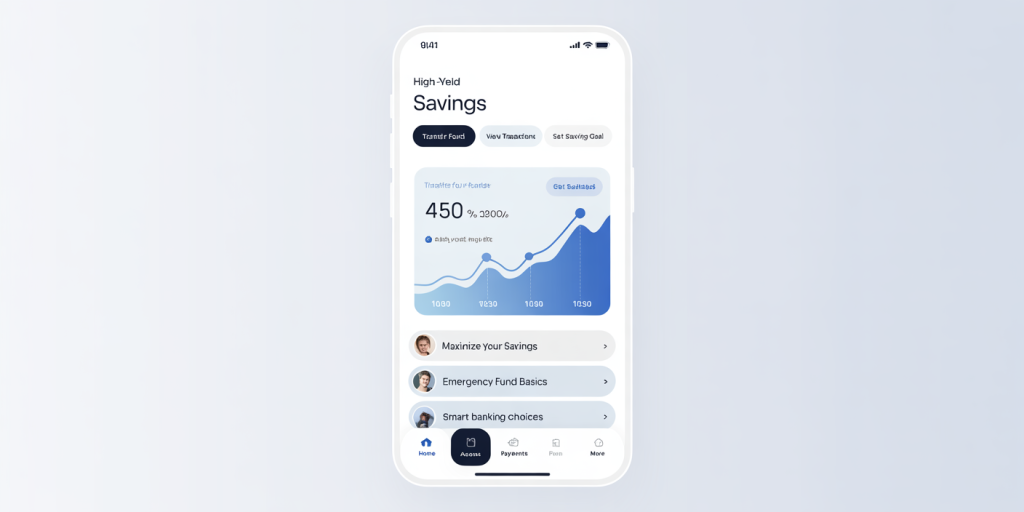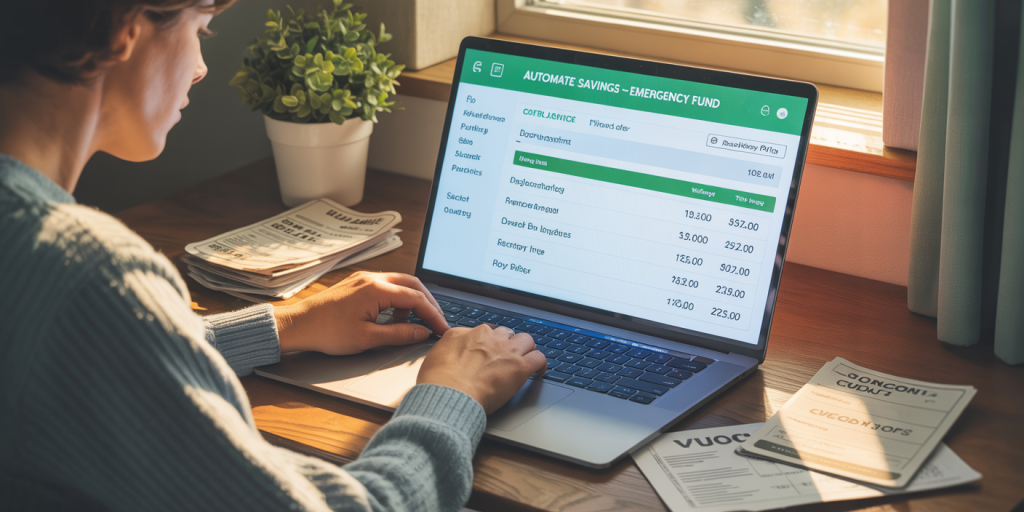An emergency fund is a critical financial safety net that protects individuals and families from unexpected expenses such as medical emergencies, car repairs, or sudden job loss. Despite its importance, many people either delay building an emergency fund or underestimate its necessary size. According to a 2023 survey by the Federal Reserve, about 37% of Americans would struggle to cover a $400 emergency expense without borrowing or selling possessions. This alarming statistic highlights the need to develop a practical, effective emergency fund.
Building an emergency fund that genuinely works involves more than just saving money—it requires strategic planning, self-discipline, and understanding your specific financial needs. In this article, we explore how to create an emergency fund tailored to your lifestyle and circumstances, illustrated by practical examples and supported by data-driven insights.
Why You Need a Solid Emergency Fund
Unexpected financial disruptions are becoming increasingly common. Economic uncertainty, rising healthcare costs, and volatile job markets mean having cash readily available can prevent a temporary setback from becoming a long-term financial crisis.
Consider the case of Sarah, a single mother in Texas who lost her job due to company downsizing. Thanks to her emergency fund—equivalent to six months of expenses—she managed to cover rent and groceries while searching for new work, avoiding debt and maintaining her credit score. The power of a well-stocked emergency fund isn’t hypothetical: It helps maintain financial stability, reduces stress, and provides flexibility during crises.
The general rule of thumb advised by financial experts like Dave Ramsey is to save between three to six months’ worth of living expenses in your emergency fund. However, individual circumstances vary—those with dependents, irregular income, or high medical risks should consider padding their reserves accordingly.
Calculating Your Emergency Fund Needs
Determining the amount you need to save for emergencies is the foundational step in building an effective fund. Many people either fall short due to underestimation or get overwhelmed by attempting to save an unrealistic sum too quickly.
Start by creating a detailed budget that outlines your essential monthly expenses. Include: Housing (rent or mortgage) Utilities (electricity, water, internet) Groceries Transportation (car payments, fuel) Insurance premiums Minimum debt payments Healthcare costs Childcare or education expenses
For example, if your essential monthly expenses total $3,000, a three-month emergency fund would be $9,000, while six months would require $18,000.
Below is a comparative table illustrating emergency fund requirements based on monthly essentials:
| Monthly Expenses | 3-Month Emergency Fund | 6-Month Emergency Fund | Recommended Savings Pace (Monthly for 1 Year) |
|---|---|---|---|
| $2,000 | $6,000 | $12,000 | $500 – $1,000 |
| $3,000 | $9,000 | $18,000 | $750 – $1,500 |
| $4,000 | $12,000 | $24,000 | $1,000 – $2,000 |
Decide on the timeline for building your fund based on your financial situation. If you have irregular income, aim for a buffer of six months or more. For stable salaries, starting with three months and building up over time is a sensible approach.

Where to Keep Your Emergency Fund
Location matters as much as the amount you save when it comes to emergency funds. You want your money to be easily accessible without risking loss of value or incurring penalties.
Traditional savings accounts have been the go-to option due to liquidity and safety. However, interest rates on standard savings accounts often lag behind inflation, which can reduce your fund’s purchasing power over time.
High-yield savings accounts (HYSA) combine accessibility with better interest rates. As of mid-2024, top HYSAs offer annual percentage yields (APYs) between 3.5% and 4.5%, significantly higher than the national average savings rate of 0.3%. This can make a meaningful difference when growing your emergency fund.

Money market accounts and short-term certificates of deposit (CDs) provide alternatives, but CDs can limit liquidity due to early withdrawal penalties. A mix of accounts according to your timeline might be a viable solution.
| Account Type | Liquidity | Typical APY (%) | Risk Level | Best For |
|---|---|---|---|---|
| Traditional Savings | Instant | 0.01 – 0.3 | Very Low | Short term, easy access |
| High-Yield Savings | Instant | 3.5 – 4.5 | Very Low | Long-term growth + access |
| Money Market Account | Same day access | 2.5 – 4.0 | Low | Moderate term |
| Certificate of Deposit | 1 month – 1 year | 4.0 – 5.0 | Low to Moderate | Longer-term emergency fund |
The key takeaway is ensuring your emergency fund remains liquid and safe. The best accounts offer immediate or near-immediate withdrawals without penalties while providing reasonable returns.
Practical Strategies for Building Your Fund
Starting to save can be intimidating, especially if you feel your income is tight. Practical, actionable strategies can accelerate your progress and keep your motivation steady.
Firstly, automate your savings. Setting up a recurring transfer from your checking to your savings eliminates the temptation to spend and builds consistency. For instance, Jane, a marketing professional, automated $200 monthly transfers from her paycheck, which allowed her to reach a 3-month emergency fund in just 15 months.
Employ the “pay yourself first” approach: Treat savings like a fixed monthly bill that must be paid before discretionary spending. This mindset shift ensures you prioritize your emergency fund.
Another strategy involves cutting non-essential expenses temporarily and redirecting those savings. For example, canceling unused subscriptions, dining out less, or reducing luxury purchases can free up funds for savings. Studies by the Bureau of Labor Statistics indicate Americans spend an average of $164 per month on streaming subscriptions alone, which can be substantial when redirected toward an emergency fund.

Side hustles or freelance work can accelerate savings too. Tom, a delivery driver, used gig economy jobs on weekends to save for emergencies and reached his six-month target in under two years. Platforms like Fiverr, Uber, or Etsy offer diverse income streams for boosting savings.
Using windfalls such as tax refunds, bonuses, or gifts exclusively for your emergency fund can make a big impact. Instead of dispersing extra income across discretionary uses, allocating 100% to your fund jump-starts its growth.
Managing and Maintaining Your Emergency Fund
An emergency fund is not a static asset but a dynamic financial tool that requires ongoing management. Once you hit your savings target, focus shifts to maintenance and appropriate use.
Withdrawals should be limited strictly to genuine emergencies. Some common qualifying events include urgent medical procedures, unexpected job loss, urgent home repairs, or immediate debt payments after a financial shock. Non-urgent purchases or investments should never dip into emergency savings.
After any withdrawal, rebuilding the fund should be the next priority. If you used $2,000 for a car repair, resume automated savings to replenish that amount promptly.
Occasionally review your living expenses and adjust your fund target as your situation changes. Significant life events—such as marriage, having children, or retirement—can increase or decrease your monthly essentials, necessitating a revision of your fund.
Using a dedicated savings account with automated alerts can help maintain discipline. Mobile apps like Qapital and YNAB provide budgeting and savings goal features which make tracking easier.
Looking Ahead: The Future of Emergency Funds
Financial landscapes continue to evolve amid technological advancements, inflation trends, and economic fluctuations. The concept of emergency funds may expand to incorporate more nuanced strategies and modern tools.
Digitization in banking offers faster access to funds and innovative savings vehicles that combine liquidity with competitive yields. Emerging apps promote “savings challenges” and gamification, increasing engagement and consistency in building emergency funds.
The rise of gig and freelance work calls for adaptive emergency fund strategies suited for unpredictable income streams. Financial advisors increasingly recommend flexible, tiered emergency funds—where a core buffer covers basic needs and variable reserves account for additional uncertainties.
Furthermore, inflation and healthcare cost rises underscore the importance of regularly updating emergency fund targets. A 2024 Consumer Price Index (CPI) report shows an average inflation rate of 3.8%, emphasizing that your emergency fund must grow not just nominally but in real purchasing power.
On a broader scale, new financial products may emerge that allow partial emergency fund access combined with insurance protections, providing more holistic safety nets. In parallel, social safety nets and employer benefits might integrate better with personal emergency savings to ensure resilience.
Building an emergency fund that works today means embracing adaptability, monitoring financial shifts, and leveraging technology. It is the foundation for financial security in an unpredictable world.
—
By following these strategic steps—accurate calculation, smart account choices, disciplined saving, and active fund management—you can build an emergency fund that truly works for you. This fund acts as a financial fortress that provides peace of mind and stability through life’s uncertainties. Start early, stay consistent, and adjust as your life evolves to maintain this vital economic safeguard.

Deixe um comentário